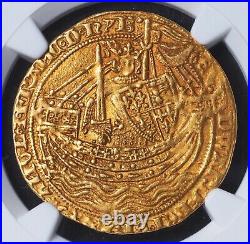
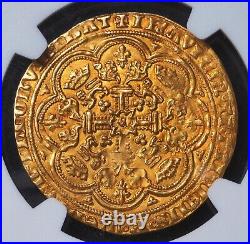
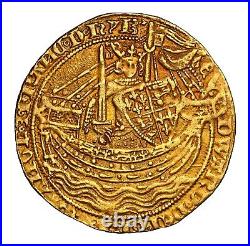
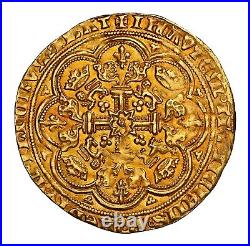
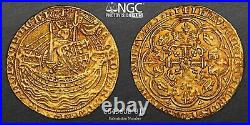
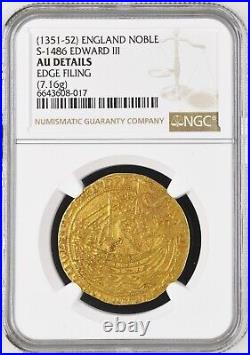
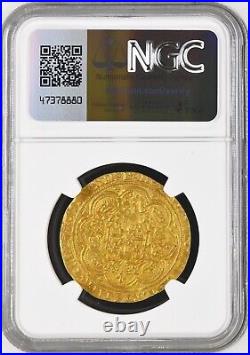

1351, England, Edward III of Windsor. Beautiful & Rare Gold Noble Coin. Certified and graded by NGC as AU Details: Edge Filing! Diameter: 32mm Weight: 7.16gm Material: Gold! Legend: EDWARDVS DEI GRA REX ANGL Z FRANC D hYB Translated. Edward, by the grace of God King of England and France, Lord of Ireland. Reverse : Ornate floriated cross with a small centered intial (“E”) of the King. Crowned leopards and lis symbols in angles. All within a polylobe. Legend: IhC AVTEM TRANSIENS P MEDIVM ILLORV IBAT, Translated. But Jesus passing through their midst went His way. It was preceded by the gold penny and the florin, minted during the reign of King Henry III and the beginning of the reign of King Edward III; these saw little circulation. The derivatives of the noble, the half noble and quarter noble, on the other hand, were produced in quantity and were very popular. Edward III (13 November 1312 – 21 June 1377), also known as Edward of Windsor before his accession, was King of England from January 1327 until his death in 1377. He is noted for his military success and for restoring royal authority after the disastrous and unorthodox reign of his father, Edward II. Edward III transformed the Kingdom of England into one of the most formidable military powers in Europe. His fifty-year reign was one of the longest in English history, and saw vital developments in legislation and government, in particular the evolution of the English Parliament, as well as the ravages of the Black Death. He outlived his eldest son, Edward the Black Prince, and was succeeded by his grandson Richard II. Edward was crowned at age fourteen after his father was deposed by his mother, Isabella of France, and her lover Roger Mortimer. At the age of seventeen he led a successful coup d’état against Mortimer, the. Ruler of the country, and began his personal reign. After a successful campaign in Scotland he declared himself rightful heir to the French throne, [a] starting the Hundred Years’ War. Following some initial setbacks, this first phase of the war went exceptionally well for England, and would become known as the Edwardian War. Victories at Crécy and Poitiers led to the highly favourable Treaty of Brétigny, in which England made territorial gains, and Edward renounced his claim to the French throne. Edward’s later years were marked by international failure and domestic strife, largely as a result of his inactivity and poor health. Edward was temperamental and thought himself capable of feats such as healing by the royal touch as some prior English kings did. He was also capable of unusual clemency. He was in many ways a conventional king whose main interest was warfare, but he also had a broad range of non-military interests. Admired in his own time and for centuries after, he was later denounced as an irresponsible adventurer by Whig historians, but modern historians credit him with significant achievements.

